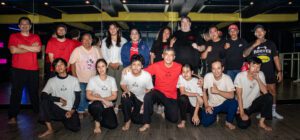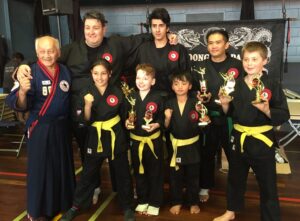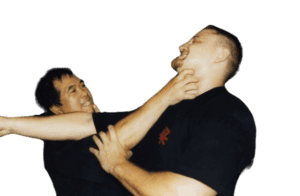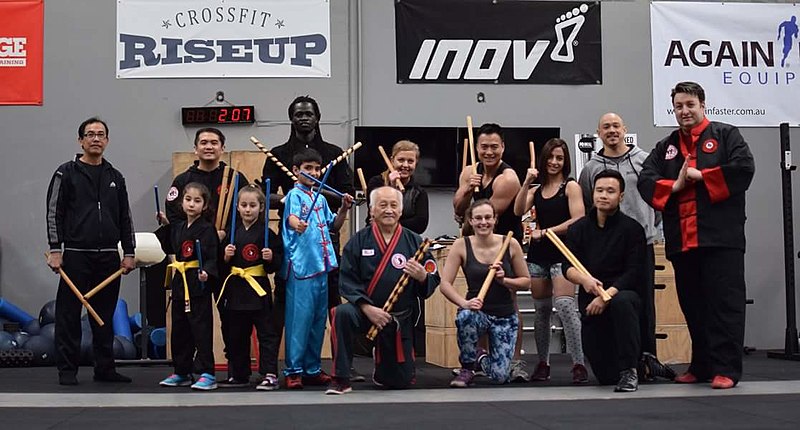Martial Arts and Team Building Exercises
By Maurice Novoa a master under the Yuen Kay Shan, Ip Man and Pan Nam lineages.
Introduction:
Greetings, dear readers! In the world of martial arts, or as I like to call it, “Fighting Styles,” we often think about individual discipline and self-improvement. But martial arts can also be a powerful tool for enhancing teamwork and collaboration. In this article, we’ll explore how martial arts can serve as effective team building exercises, fostering not only physical strength but also a sense of unity and camaraderie.
The Power of Team Building

Building Stronger Teams
In today’s fast-paced and competitive world, strong teams are crucial in both professional and personal spheres. Effective teamwork can lead to increased productivity, enhanced problem-solving abilities, and better overall group dynamics.
Addressing Team Challenges
Team building exercises are designed to address common challenges within groups, such as communication issues, trust deficits, and lack of synergy. These exercises aim to boost team morale, encourage cooperation, and improve overall team performance.
Martial Arts as Team Building Exercises

1. Fostering Communication
Effective communication is the backbone of both martial arts and successful teamwork. In martial arts training, communication extends far beyond words. Practitioners engage in partner drills and sparring, where they learn to communicate non-verbally. This form of communication is a delicate dance, where individuals anticipate and react to their partner’s movements.
Through continuous practice, martial artists become adept at reading subtle cues, which is invaluable in both self-defense and team dynamics. Just as in a martial arts setting, effective teams require strong communication to work together harmoniously. The ability to understand non-verbal signals, body language, and the unspoken needs of team members can lead to smoother collaborations, quicker problem-solving, and a heightened sense of unity.
2. Developing Trust
Trust is an integral component in both the world of martial arts and team building. In martial arts, trust is a fundamental building block. When you step onto the mat with a training partner, you are entrusting them with your safety. You trust that they will not harm you, and they trust you in return. This mutual trust is nurtured over time through shared experiences, training, and mutual respect. In the world of teamwork, trust operates in a similar way.
Trust among team members is developed through shared achievements, challenges, and mutual respect. Just as martial artists learn to trust their training partners to watch out for their well-being during sparring, teams depend on trust to collaborate effectively, knowing that each member is working toward a common goal. This bond of trust is what elevates a group of individuals into a cohesive team.
3. Enhancing Problem-Solving Skills
Martial arts demand quick thinking and the ability to adapt rapidly to changing situations. Practitioners are constantly exposed to diverse scenarios in training, where they must think on their feet and make split-second decisions. These skills are directly transferable to team dynamics. In a team, unexpected challenges and changing circumstances are par for the course.
The problem-solving skills honed in martial arts empower individuals to approach challenges methodically and creatively. It encourages them to adapt and find effective solutions, both independently and as a group. The ability to remain level-headed and agile in the face of adversity is a remarkable asset in any team setting, driving more efficient solutions and boosting overall team performance.
4. Encouraging Mutual Support
In martial arts, practitioners often find themselves in a community that actively supports and cheers each other on. This same culture of mutual support is essential within team dynamics. In the martial arts world, this support system can make the difference between success and failure. When one practitioner is struggling, the encouragement and motivation from their peers can help them push through. This support isn’t about competition; it’s about personal growth and shared progress.
The same sense of mutual support is equally crucial in team settings. When individuals feel supported, they are more likely to take risks, suggest ideas, and offer their best contributions. A team that encourages mutual support cultivates an atmosphere where each member feels valued and inspired to give their best, ultimately resulting in a more productive and harmonious group. Incorporating these aspects from martial arts into team building exercises fosters not only physical and mental development but also a sense of unity, trust, and cohesion that can lead to more effective teamwork in any setting.
Wing Chun: A Catalyst for Effective Team Building
Wing Chun, a martial art known for its effectiveness in close-quarters combat, is exceptionally well-suited for team building exercises due to several key reasons:
1. Close-Quarters Training:

Wing Chun’s primary focus is on close-quarters combat, and this emphasis on operating effectively in tight spaces directly parallels the challenges teams often encounter during problem-solving. Practitioners of Wing Chun are trained to navigate and engage in confined spaces, where traditional martial arts might be less practical. This training sharpens their ability to handle high-pressure situations with grace and efficiency.
Just as Wing Chun equips its practitioners to thrive in close quarters, team members who have experienced these challenges in a controlled environment are better prepared to tackle close-knit group tasks. Wing Chun, in this sense, becomes a metaphor for the challenges and constraints that teams must often navigate in their collaborative efforts.
2. Adaptability and Flow:
Wing Chun is celebrated for its adaptability and emphasis on fluidity in movement. Practitioners learn to transition seamlessly between techniques and strategies in response to their opponent’s actions. This flexibility and the capacity to pivot swiftly are crucial attributes for team members working in fast-paced, ever-changing environments.
Just as Wing Chun practitioners adapt to the flow of a fight, teams benefit from members who can shift effortlessly to address shifting circumstances, ultimately enhancing their problem-solving and decision-making capabilities. This adaptability aids teams in staying agile and well-prepared for the unforeseen challenges that may arise during their collaborative endeavors.
3. Building Unity:
Unity of mind and body is a fundamental principle in Wing Chun. Techniques are executed with a profound connection between thought and action. The practitioner’s movements and intentions align seamlessly. This unity of mind and body exemplifies the level of cohesion and synergy that team building exercises aim to instill within groups. By fostering this alignment, Wing Chun teaches its practitioners to act with purpose, precision, and intent.
In a similar vein, teams that build unity among their members create an environment where every individual acts with a shared purpose and a coordinated approach. This unity is a driving force that propels the team toward its objectives and fosters a stronger sense of belonging, trust, and mutual support.
Incorporating Wing Chun into team building exercises not only equips team members with valuable skills and mindsets but also helps them experience firsthand the importance of adaptability, unity, and the ability to work effectively in close-knit environments. These valuable lessons can lead to enhanced teamwork and problem-solving within any group setting.
Successful Martial Arts Team Building: A Deeper Look
Effective team building through martial arts is rooted in several key principles:
1. Skilled Instructors:

Skilled instructors serve as the lynchpin of successful martial arts team building. These instructors possess a deep understanding of martial arts techniques and philosophies, but they also have expertise in team building dynamics. Their combined knowledge allows them to guide teams effectively.
They play a critical role in creating a safe and educational environment where team members can learn martial arts while simultaneously developing essential teamwork skills. Skilled instructors offer valuable insights into how martial arts principles relate to team dynamics and problem-solving. They can tailor training sessions to meet the specific goals and challenges of the team, fostering a deeper connection between martial arts and team building.
2. Customized Programs:
Effective team building through martial arts is not a one-size-fits-all endeavor. Tailored programs that align with a team’s specific goals and challenges are the ones that yield the best results. These customized programs take into account the team’s unique needs and adapt martial arts training accordingly. Whether a team seeks to improve communication, trust, or problem-solving, the program can be tailored to emphasize the relevant martial arts techniques and exercises.
This approach ensures that team members can directly apply what they learn in the martial arts sessions to their collaborative efforts. Customization helps team building transcend the boundaries of the training mat and become a seamless part of the team’s day-to-day interactions.
3. Consistent Practice:
Consistency is a fundamental aspect of successful martial arts team building. Regular martial arts sessions are essential for several reasons. First, consistency helps build trust among team members. Over time, team members learn to rely on each other and develop a deeper understanding of their strengths and weaknesses. This ongoing practice also fosters effective communication as team members become more attuned to non-verbal cues and are better able to anticipate each other’s actions.
Problem-solving skills are honed through repeated exposure to diverse scenarios. The key here is that consistency builds these teamwork skills gradually, allowing team members to grow and learn at their own pace.
4. Supportive Environment:
A supportive and encouraging environment is vital for successful martial arts team building. This supportive atmosphere must exist both within the team itself and in the martial arts class. Within the team, members should feel valued, heard, and respected. Supportive team dynamics are essential for fostering trust and cooperation, two critical elements of teamwork.
The martial arts class should also provide a supportive environment where team members can actively participate and engage. This support encourages a sense of belonging and mutual respect, further strengthening the sense of unity within the team. It’s this unity that amplifies the team’s problem-solving abilities and overall performance.
Incorporating these principles into martial arts team building creates a dynamic and enriching experience for teams. These principles help build trust, enhance communication, and foster effective problem-solving, ultimately leading to more successful and cohesive teams in any setting.
The Lasting Impact of Martial Arts Team Building
The effects of incorporating martial arts into team building exercises are not only substantial but often have a lasting impact on teams. Here’s a more in-depth exploration of these effects:
1. Improved Team Dynamics:
Martial arts team building fosters an environment where team members learn to understand each other on a deeper level. This understanding goes beyond just knowing names and job titles; it extends to recognizing each other’s strengths, weaknesses, and unique qualities. As team members engage in martial arts training, they collaborate, support, and rely on one another.
This interaction creates an intimate awareness of each member’s capabilities and idiosyncrasies, which can significantly improve overall group dynamics. A team that comprehends the diverse skills and attributes of its members is better equipped to allocate tasks, communicate effectively, and maximize each individual’s contributions. In this way, martial arts enhance team dynamics and lead to more cohesive, harmonious, and productive teams.
2. Enhanced Communication:
Effective communication is the lifeblood of any successful team, and martial arts team building places a strong emphasis on honing these skills. Through martial arts training, team members not only communicate verbally but also learn to understand and interpret non-verbal cues. This multidimensional approach to communication is invaluable in team settings.
Improved communication within the team leads to more efficient decision-making processes, smoother problem-solving, and a greater ability to achieve shared goals. The clarity and precision with which team members can express their ideas and listen to one another translate into better collaboration, making martial arts an exceptional vehicle for enhanced communication.
3. Boosted Morale:
Martial arts team building often has a profound impact on team morale. As teams bond through shared martial arts experiences, a sense of camaraderie and unity emerges. This unity significantly boosts morale and fosters a more positive and productive work environment.
The connections formed during training sessions create a support system within the team, wherein members not only work together but also cheer each other on. This mutual encouragement leads to a higher level of motivation, job satisfaction, and a greater sense of belonging within the team. In turn, a more enthusiastic and motivated team is likely to perform better, collaborate more effectively, and achieve higher levels of success.
Conclusion
In conclusion, the integration of martial arts into team building exercises leaves a profound and lasting impact on teams. It enhances team dynamics by promoting a deeper understanding of each member’s strengths and weaknesses. This, in turn, improves communication within the team, leading to better decision-making, problem-solving, and goal achievement.
Most importantly, martial arts team building raises team morale, creating a positive and productive work environment that fosters mutual support and motivation. The effects of martial arts team building extend far beyond the training mat, influencing how teams collaborate, communicate, and thrive in their collective endeavors.

